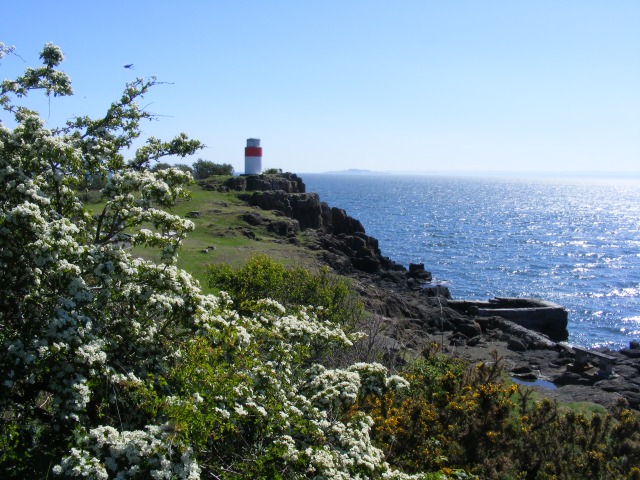Today we were meant to be going to Inchcolm island. The clue is in the name really; ‘island’ involves a boat. I thought I had correctly identified the location of the ferry boarding point but lack of time to prepare for this trip meant that I didn’t have my usual beautifully printed out itinerary. We set off. I plug the postcode into the sat-nav. It doesn’t seem to exist. Instead of returning to the van and firing up the computer to check the proper address, I try to remember it. We try Queensferry. The sat-nav insists this is in Wales. Even we know we don’t need to go 288 miles. I know, I know, we should be able to Google this on the mobile phone that we have that is less than thirteen years old. Phone fine, operator not so. We could have and perhaps should have, made a call on said mobile phone (we can actually accomplish that, or at least one of us can) and summoned assistance. We didn’t. I look at a map (remember those?). Unfortunately, it is a very small-scale map but it does suggest I might need to be looking at North Queensferry. We go to North Queensferry. We get nice views of the Forth Road Bridges (which no one is painting) but no sign of a ferry. I try the postcode again. I’ll own up here, I have scribbled this down and can’t actually quite read my writing; this is not an unusual occurrence. The postcode I put in takes us somewhere called Aberdour. (It turns out this was the correct postcode for the island but not for the ferry). By this time, we have missed the ferry, which doesn’t go from here anyway. (I later discover we needed South Queensferry – ah well, hindsight and all that). Aberdour is a satisfactory plan B and after a wander along the coast path enjoying the wildflowers and bird song, we walk inland to Aberdour Castle.
It is likely that a stone tower was constructed here in the twelfth century by Sir William de Mortimer, making it one of the oldest castles in Scotland. Additions and improvements were made and by the sixteenth century, James Douglas, the Earl of Morton, regent to the under-age James VI, had created a residence with a lavish Renaissance garden on this spot. His doocot, with room for 600 pigeons, was designed as a status symbol. It includes ‘rat courses’, ridges to impede rats trying to get inside. Douglas was beheaded in 1581 when he was accused of murdering Henry, Lord Darnley, the king’s father and husband of Mary Queen of Scots. The property was owned by William Douglas, the 8th Earl of Morton in the seventeenth century and suffered from a severe fire in 1688. Troops were billeted here during the Jacobite Rebellion of 1715 and another fire led to the gradual decay of the building, with major collapses in 1844 and 1919. The gardens have now largely been laid to lawns, which is a shame. We can however recommend the café’s produce. Aberdour’s claim to fame is that it featured in Outlander. I have never watched Outlander; is this sacrilege?

We take a look at neighbouring St Fillan’s Church, which dates from 1123, or earlier. In 1790, the Countess of Morton got fed up with the great unwashed attending a church so close to the castle and had the roof removed, forcing the congregation to meet in town instead! It was restored in 1926. The stained glass is beautiful and I am also taken with the leper’s squint, allowing sufferers from leprosy to witness the service whilst limiting the danger of contagion (although leprosy is actually a great deal less easily transmitted than was believed). Allegedly, Robert the Bruce, a leprosy sufferer, used this squint.
On the way home, we see signs to ‘Scotland’s secret bunker’; spot the irony!